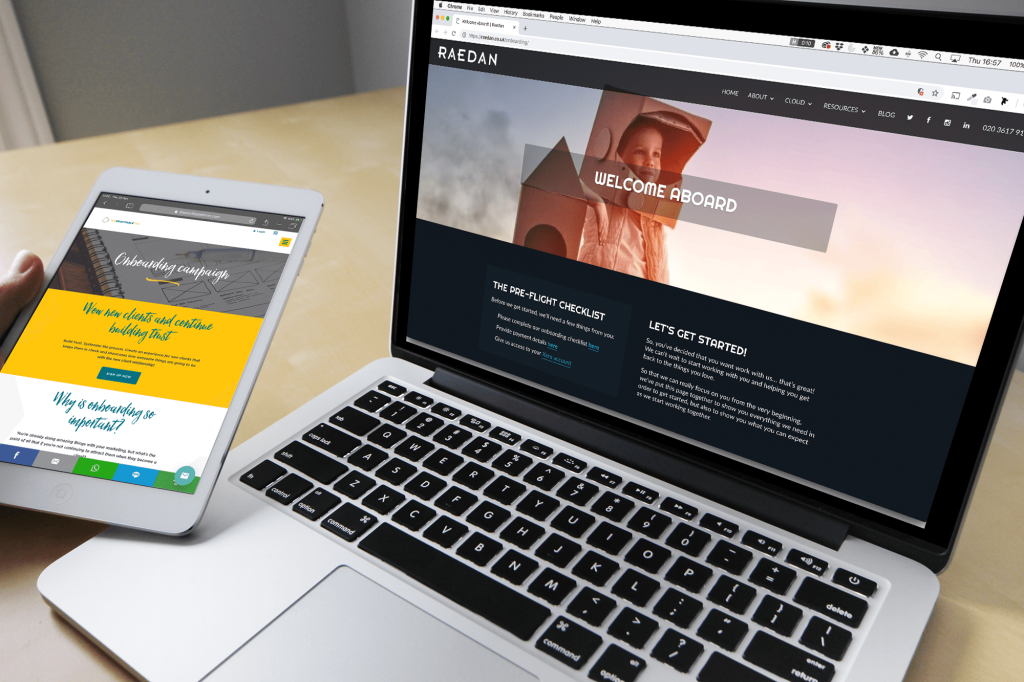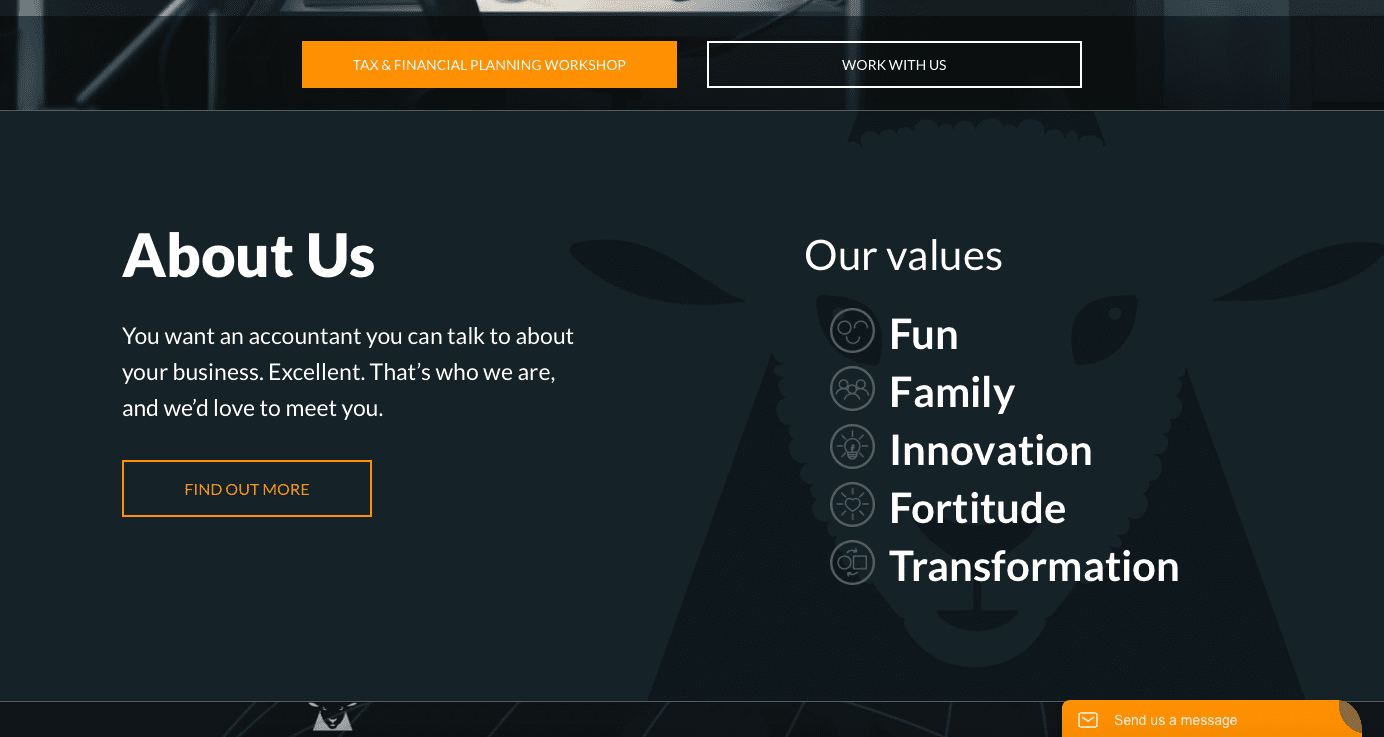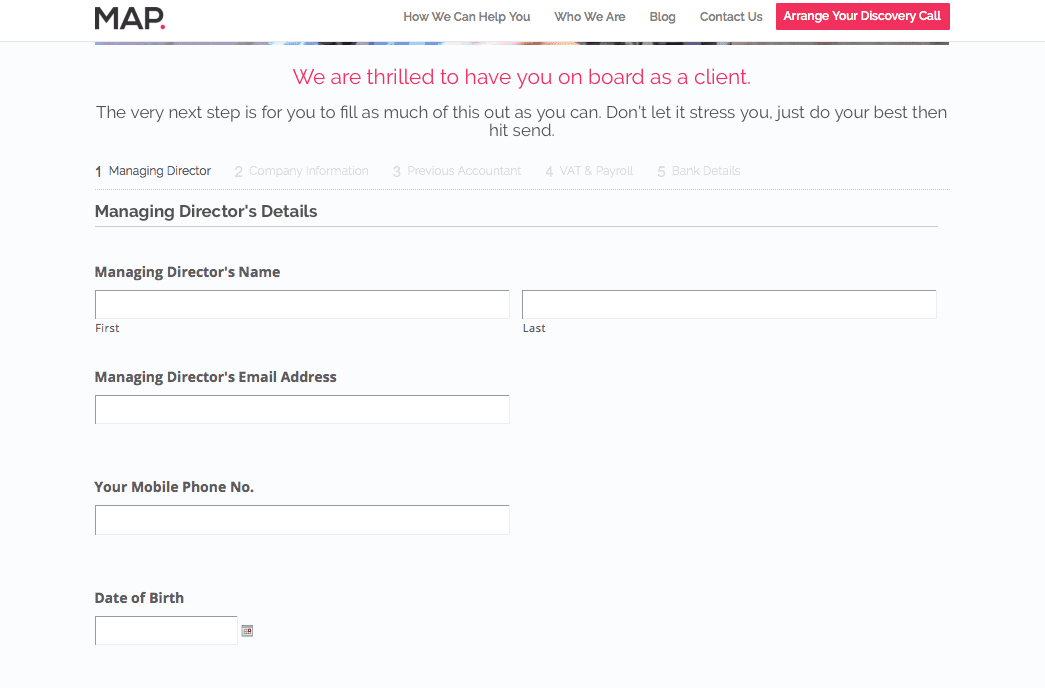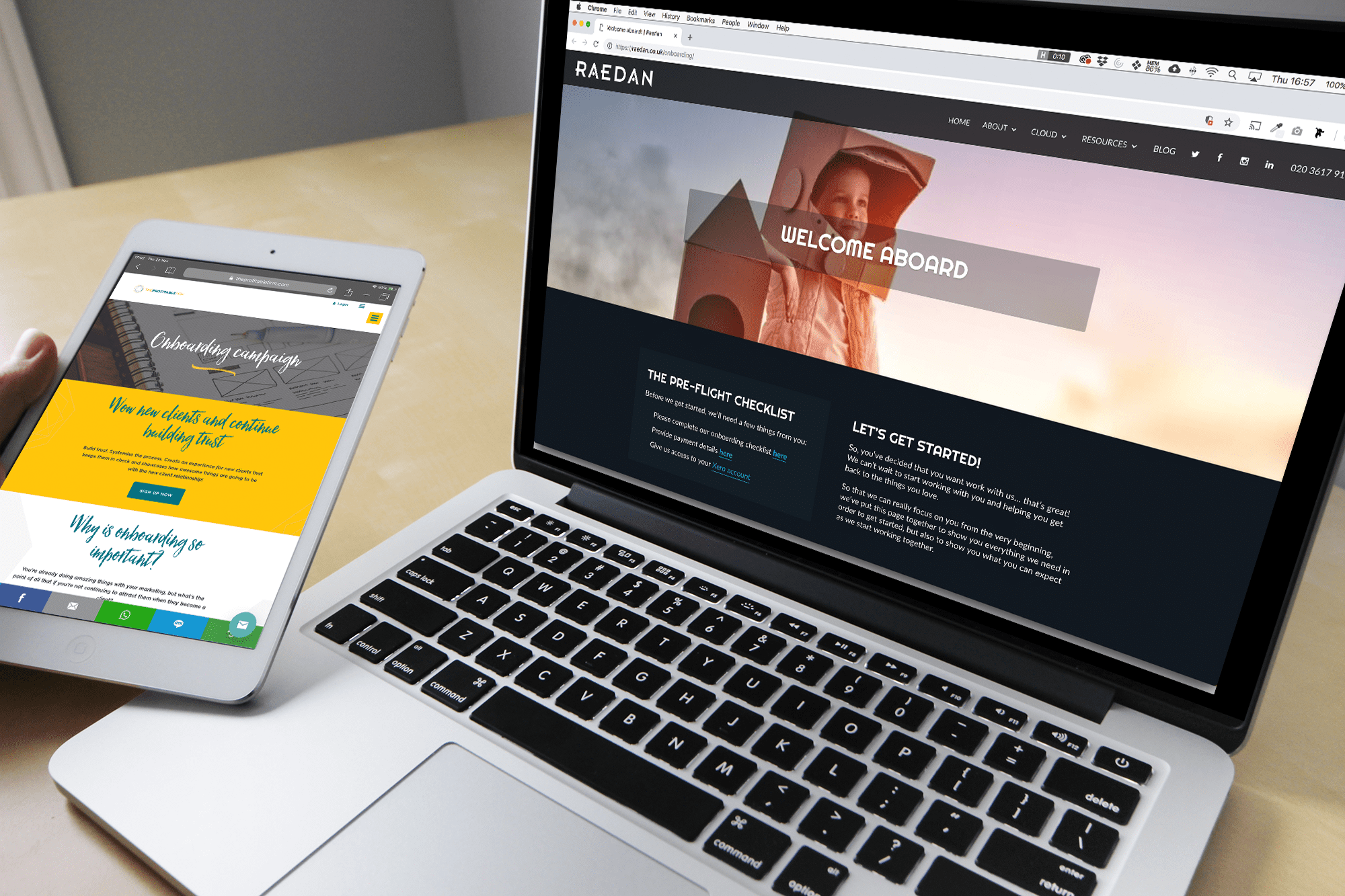
Creating a great onboarding process is not about saving time and being efficient.
Those are great benefits to you: but onboarding is not about you.
The greatest and highest goal of your onboarding process is to deliver on the promises you made during the sales process.To make sure the incredible experience they signed up for, actually happens.
An onboarding process can be quite detailed: but that doesn’t mean it has to be complex. At its heart onboarding is extremely simple.
What did you promise to do during the sale?
What will happen first – when they sign up?
What will happen next – over the first six months?
How will you improve on the success of your client’s business – over the lifetime of your relationship?
All these questions relate to confidence and trust.
Your buyer is signing up with you as their new accountant because (at the moment of the sale) they feel confident you are the one who can solve their problems. Help them grow. Inspire them. Support them in upcoming problems they aren’t aware of yet. Help improve profitability.
Every accounting firm has slightly different methods of delivering on these things: and you’ve shared them in a variety of ways.
Maybe it’s your niche: you serve this particular industry, and this one alone.
Example: Ashton McGill (creatives), DBS (dentists)
Or your team: you’ve invested in the abilities of your team so they can serve the business particularly well.
Example: Farnell Clarke (37 hour working week, unlimited holidays)
Your method: you have a tried and tested process (perhaps unique to your firm, perhaps not) for delivering profitability.
Example: MAP methodology (PDF)
Your values: the way you do business and do life stands out in a particular way.
Example: Black Sheep (fortitude, fun, innovation, transformation, family)
Those are at the heart of who you are and the personal connection they have with you. But those aren’t the details of what you will actually DO.
What did you promise to do during the sale?
The first thing your onboarding process needs to do is
- Identify what you’ve promised to do during the sale.
- Show the specific, detailed ways you’ll deliver on those promises.
This could be things like….
- Solve your current accounting problem (a huge tax bill, penalty payments, confusion about accounts).
- Be available whenever you have a question.
- Give you confidence in understanding and using your business numbers.
And then you’ll identify exactly what your firm does to deliver on these. Your details could be unlike any other firm, but it’s okay if it’s similar to another firm – your personality and culture will cause it to stand out. (You could borrow another firm’s general concept and infuse it with your brand, and it would look totally different.)
So for example your onboarding could explain that in order to deliver on the 3 items above, you will…
- Have a half day strategy session to kick off the relationship
- Use Slack, Whatsapp, or some other method to be available whenever a question presents itself
- Invite you to regular trainings at your offices (or theirs) on accounting software, business growth methods, profitability and growth sessions
- Meet with you quarterly or monthly to go through your numbers and answer any questions they have
What will happen first?
Your new client has gotten clarity on what was promised, and exactly how you’ll deliver it. The question now is, what will happen first, and in what order?
Applying further details (and dates) to your promised process continues to build confidence. Your client needs to understand it will take a while for this new relationship to deliver on all the exciting results you discussed in the sales meeting. (You don’t want them expecting magical results instantly, but rather developing a habit of working with you day by day, month by month, until those results begin to appear.)
Your onboarding process will now go into detail about what happens in the first few weeks of the relationship. You’ll want to identify what you will do, and what the client is expected to do.
“First” usually covers about a month of time. This is one of the most critical time period of the new relationship, because your client is equally the most excited they will be…and also the most concerned. The slightest positive thing may thrill them; and the slightest negative thing may really discourage them. Be alert during this first month. A few things might go wrong, and that’s okay: it’s not so much about what happens as how you respond to it. Invoice didn’t get automatically generated? Welcome pack never arrived? Welcome call never happened? Whatever it was, the best thing you can do is communicate with them at every point. Thank them for pointing it out, apologise, explain what went wrong on your end, and how you are fixing it for the future.
Following our example above, this could be…
- Onboarding questionnaire asking for all the business details – online form emailed to you
- Welcome call with client manager – 15 minute video call
- Welcome pack posted out
- Connect on Slack or community system
- Book half day strategy session – within first 2 months
- Etc
Ways to communicate this are:
- Graphic/map with details
- Video from you explaining month 1 and why
- Page on your website with the graphic & video
- Emails to announce & remind
- Automatic reminders to team to set up meetings/calls
Example: Raedan communicates this on their detailed Onboarding page.
What will happen next?
Your onboarding process now explains what will happen in (at a minimum) the first six months of the client relationship.
A month goes by incredibly quickly. As you know it can take time to get all the new client’s information, set them up on a new system or integrate relevant apps, and begin to get to know them as a person.
Within the first six months you’ll want to deal with things like:
- Setting up on a new accounting system (or fixing the information they’ve got on it now).
- Training them or their finance team on the accounting system and their role in it.
- Clarifying what the client will do regularly (and when), and what you will do (and when).
- Integrating relevant apps (receipts & expenses, payroll, inventory, time tracking, industry-specific apps).
- Helping the business owner understand what their accounts mean, and taking ownership of their own numbers.
- Inspiring and encouraging them in relation to their finances.
Your detailed onboarding could then include things like:
- Half day setup workshop with finance team.
- Access to client videos on different aspects of accounting system.
- Monthly or quarterly meet with business owners and/or finance team.
- App stack session (identifying which apps are relevant and planning a process of introducing these into the business).
- Monthly zoom sessions/webinars/mentoring group to make sure all is on track.
- Invitation to next 6 months’ of events/workshops/sessions you offer to clients.
- Monthly check in call from someone besides your client manager.
How will you improve on the success of your client’s business – over the lifetime of your relationship?
You’re welcome to extend your onboarding process further than six months.
Beyond the 6-12 month time period, you’re starting to move away from onboarding as such, and into a “Client Experience” process.
After all, the average time a business stays with their accountant is between 15-17 years: you want to presume on this, and share it with your client.
Make sure they know it’s your intention to be their accountant for life, and why. Show your commitment.
I do still consider this part of your onboarding process. If onboarding is about delivering on the promises you made in the sale, then you definitely want to show them the whole picture, from start to finish.
It’s not merely about ‘onboarding’ someone and then leaving things to tick over and hope they go well: that approach could backfire in the exact same way as if you didn’t have an initial onboarding process at all. (You make the sale, you hand the client over to one of the account managers, you go back to selling.)
What you’re doing in this part of onboarding is sharing the ways your firm delivers on your brand values over the lifetime of the client relationship.
This presumes you have brand values, clearly identified and shared from your initial marketing through to your onboarding and client experience, such as:
- Fun: We will have regular events for clients simply for the purpose of having a great time – not even looking at the numbers!
- Family: We’d love to get to know who is important to you. Twice a year we have an event to which we encourage you to bring your family members.
- Tech: We have a webinar once a month to share the newest app we suggest you incorporate into your business.
- Innovation: We send our team to creative events like [name of event] so they can learn new ways of doing things in your industry.
Those are some examples based on typical values or purpose words for accounting firms – naturally you’ll want to 1) make sure your firm is crystal clear on what your core values are, and 2) craft specific, unique actions you will provide to ensure these values are delivered on.
Pull it all together: A visual representation of your onboarding process
Your final step is to combine all this together into a process that clearly and visually represents what you will do and when.
This visual process can be shared by your team in the sales process.
Then, when you begin delivering on it, your new client feels justified and confident in their choice of you as their accountant – so they stay with you for a lifetime.
Here are some specific elements you’ll want to include:
1. Who we are / About us website page:
Make sure your core values are clearly communicated here. Your firm’s brand and personality – ideally in 3-7 words . You (and your new client) will refer back to this often.
2. Our process website page:
An overview of what happens first, what happens next. This can be big-picture, or go into more detail – some firms have this as well as a detailed onboarding page.
3. Onboarding page:
Your opportunity to feature the details of the first six months. Ideally you’ll include a visual graphic and a video.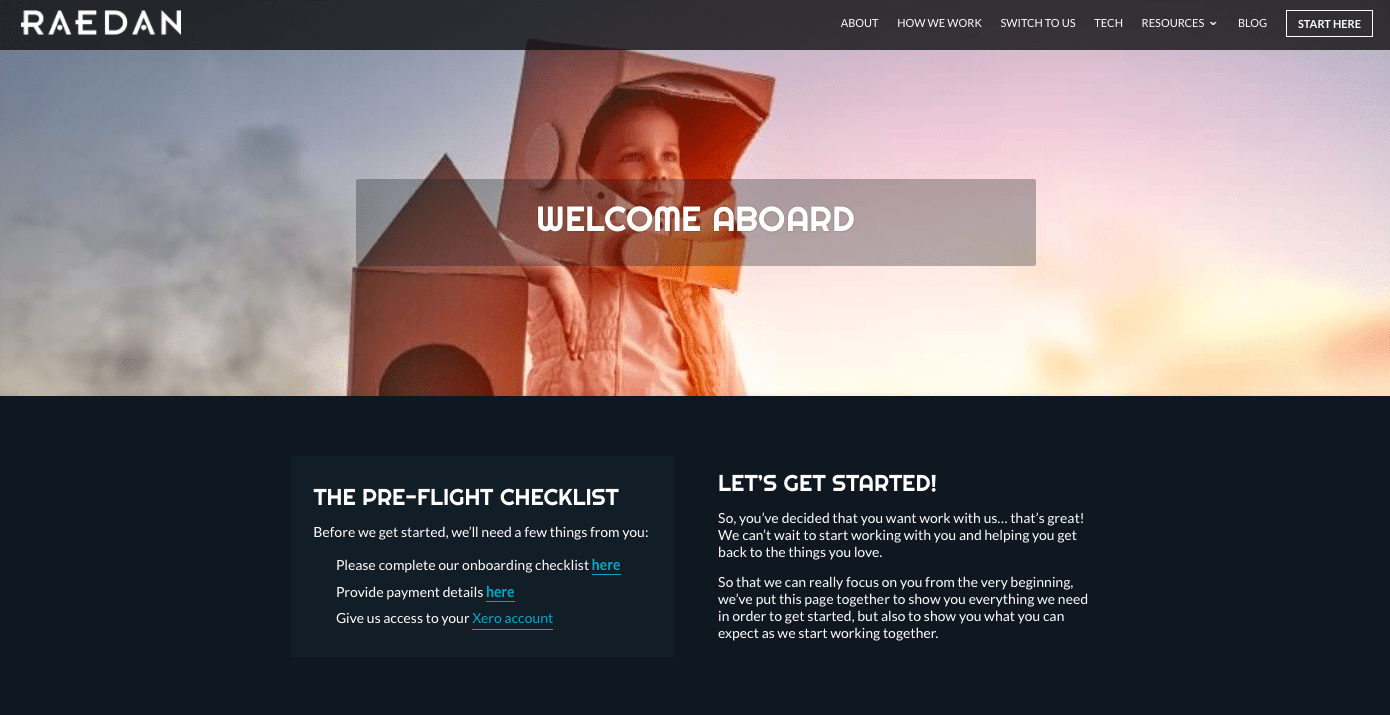
4. Questionnaire(s):
Make it as simple as possible for your new client to provide the information you need from them – and don’t make them repeat anything or get frustrated with how much is there. Do whatever you can in your process to simplify, simplify.
5. Email reminders:
For when your amazing website pages and questionnaires, and your welcome calls, are still forgotten by your very busy client. Set it up so that the email reminder does not go if the item has actually been completed.
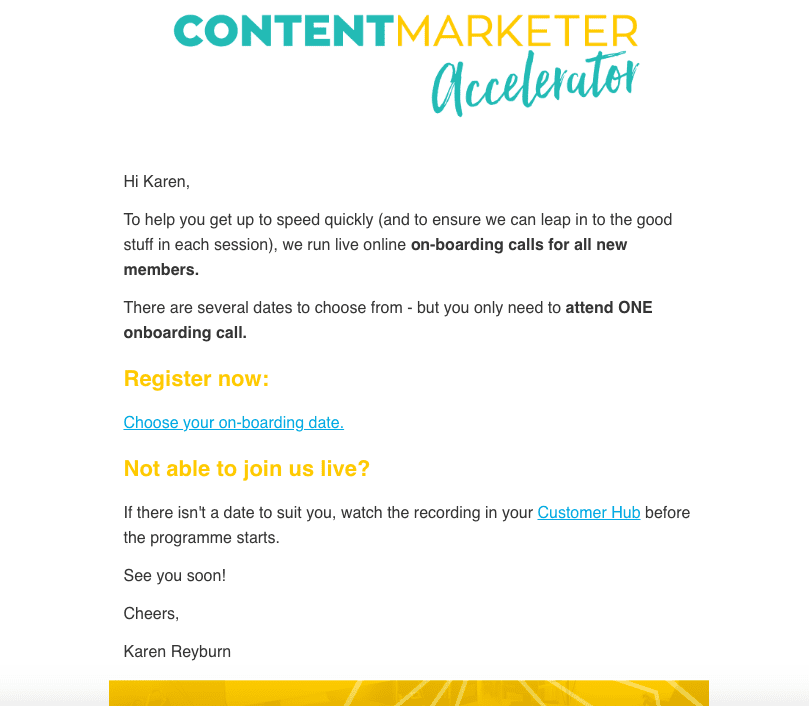
6. Welcome pack:
Something tangible you send out.
7. Video, video, video:
At every stage in this process, include a video. A welcome video from the firm owner(s) or the client’s new manager. A video from the whole team explaining what you stand for and why. How-to videos on the questionnaires, or a summary of your process. These videos don’t have to be longer than a few minutes (and actually I’d encourage you to keep them short). Most people prefer video, and it helps them get to know you, fast.
Those are the core elements – you can always add more. Use your creativity and apply it specifically to your clients and their needs. Consider things like:
- An app page detailing the specific apps you recommend for a particular industry.
- Events page, so they can register for any online or offline events you’re running.
- Resources/free stuff page, to help them get to helpful resources relating to their business or industry (you could also create multiple resource pages by industry).
- Social media links: Make sure they can quickly and easily connect with you on all the platforms.
- Training videos: A client-only page, or even a private page per client, with specific videos that will help them with software, tech, business growth.
I’d love to hear about your onboarding process – what you include, what you send in the welcome pack, what you’re dreaming of doing! Do share!

